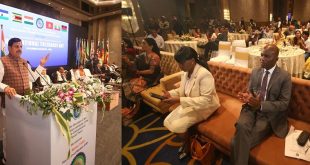
The excitement for Lok Sabha elections has now reached its peak. The first phase of voting has ended. Low voting has become a matter of concern for every party. But is there any guarantee of victory even if getting more votes? In the Lok Sabha elections 2019, BJP gave its best performance with only 37.7 percent vote share. The party won 303 seats. At the same time, in 1989, Congress could not cross the mark of 200 seats even after getting about 40 percent votes. Why after all?
Could this be the reason?
This is happening due to the participation of more parties in elections and the practice of coalition politics. In fact, in the 40 years between 1989 and 2019 Lok Sabha elections, the vote share of the largest party has been between 20 percent to 40 percent. Coalition politics also grew rapidly during this period. Getting the highest number of votes in the Lok Sabha elections is not a guarantee of forming the government. At least that's what it seems after looking at these figures.
| the year the elections were held | a political party | get seats | Voteshare (percentage) |
| 1951 | Congress | 364 | 45 |
| 1957 | Congress | 371 | 47.8 |
| 1962 | Congress | 361 | 44.7 |
| 1967 | Congress | 283 | 40.8 |
| 1971 | Congress | 352 | 43.7 |
| 1977 | bld | 295 | 41.3 |
| 1980 | Congress | 353 | 42.7 |
| 1984-85 | Congress | 414 | 48.1 |
| 1989 | Congress | 197 | 39.4 |
| 1991-92 | Congress | 244 | 36.4 |
| 1996 | BJP | 161 | 20.3 |
| nineteen ninety eight | BJP | 182 | 25.6 |
| 1999 | BJP | 182 | 23.8 |
| 2004 | Congress | 145 | 26.5 |
| 2009 | Congress | 206 | 28.6 |
| 2014 | BJP | 282 | 31.3 |
| 2019 | BJP | 303 | 37.7 |
growing political parties
In the 1951 general elections, 53 parties were in the fray, by the time of 2019 elections this number increased 12 times. 670 parties were trying their luck in the 2019 Lok Sabha elections.
Something similar happened in the US presidential election in 2016. When Donald Trump won the election. At that time the percentage of votes he got was less than that of Hillary Clinton. This was also seen in the 2018 Madhya Pradesh elections, where the total vote percentage of Congress was less than BJP, but it was still ahead of BJP in terms of seats. In the 230-member assembly, Congress got 114 seats and BJP 109 seats.
There are an average of 17.85 lakh voters per seat in the country. The total number of voters is 96.97 crore. The top 5 states in the country in terms of low vote value (opportunity to elect fewer MPs despite having more voters) are Rajasthan (21.04), Delhi (21.04), Haryana (19.83), Madhya Pradesh (19.45) and Telangana (19.43). , Among the states with the highest vote value is Arunachal Pradesh (4.44). It is followed by Sikkim (4.64), Goa (5.83), Mizoram (8.61) and Manipur (10.24). If you divide the total number of voters in the state by the total number of Lok Sabha seats in the state, you will know the value of votes for your state.
BJP's target of 400 seats
The ruling party BJP has set a target of 400 plus seats in this Lok Sabha elections. In the last elections, BJP had got 303 seats. Out of the total seats won by BJP, it got more than 50 percent votes in three-fourth (224) seats. The number of such seats for Congress was only 18.
 look news india
look news india
